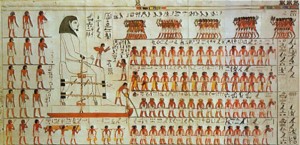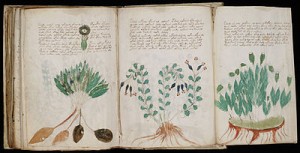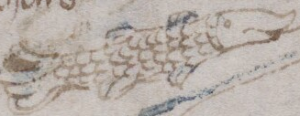 The mystery of how the ancient Egyptians moved the large stones to build the pyramids has possibly been solved. A team from the University of Amsterdam found that to make it easier for stones or statues to slid when pulled on a wooden sled, you just moisten the sand in front. Tests confirmed that doing so (with the right amount of water) cuts the force required to pull it by half, mostly because the sand doesn’t pile up into a ridge in front of the sled as it’s being pulled. As further evidence, artwork from the tomb of Djehutihotep shows a large statue being pulled on a sled…and one person pouring liquid onto the ground right in front of the sled. It’s a pretty compelling argument, though not as cool as the idea of aliens in UFOs using tractor beams to help out. 😉
The mystery of how the ancient Egyptians moved the large stones to build the pyramids has possibly been solved. A team from the University of Amsterdam found that to make it easier for stones or statues to slid when pulled on a wooden sled, you just moisten the sand in front. Tests confirmed that doing so (with the right amount of water) cuts the force required to pull it by half, mostly because the sand doesn’t pile up into a ridge in front of the sled as it’s being pulled. As further evidence, artwork from the tomb of Djehutihotep shows a large statue being pulled on a sled…and one person pouring liquid onto the ground right in front of the sled. It’s a pretty compelling argument, though not as cool as the idea of aliens in UFOs using tractor beams to help out. 😉
(via Gizmodo)


 I learned about something interesting today, the
I learned about something interesting today, the


 We all know that in 1906, a large earthquake, followed by a devastating fire,
We all know that in 1906, a large earthquake, followed by a devastating fire,